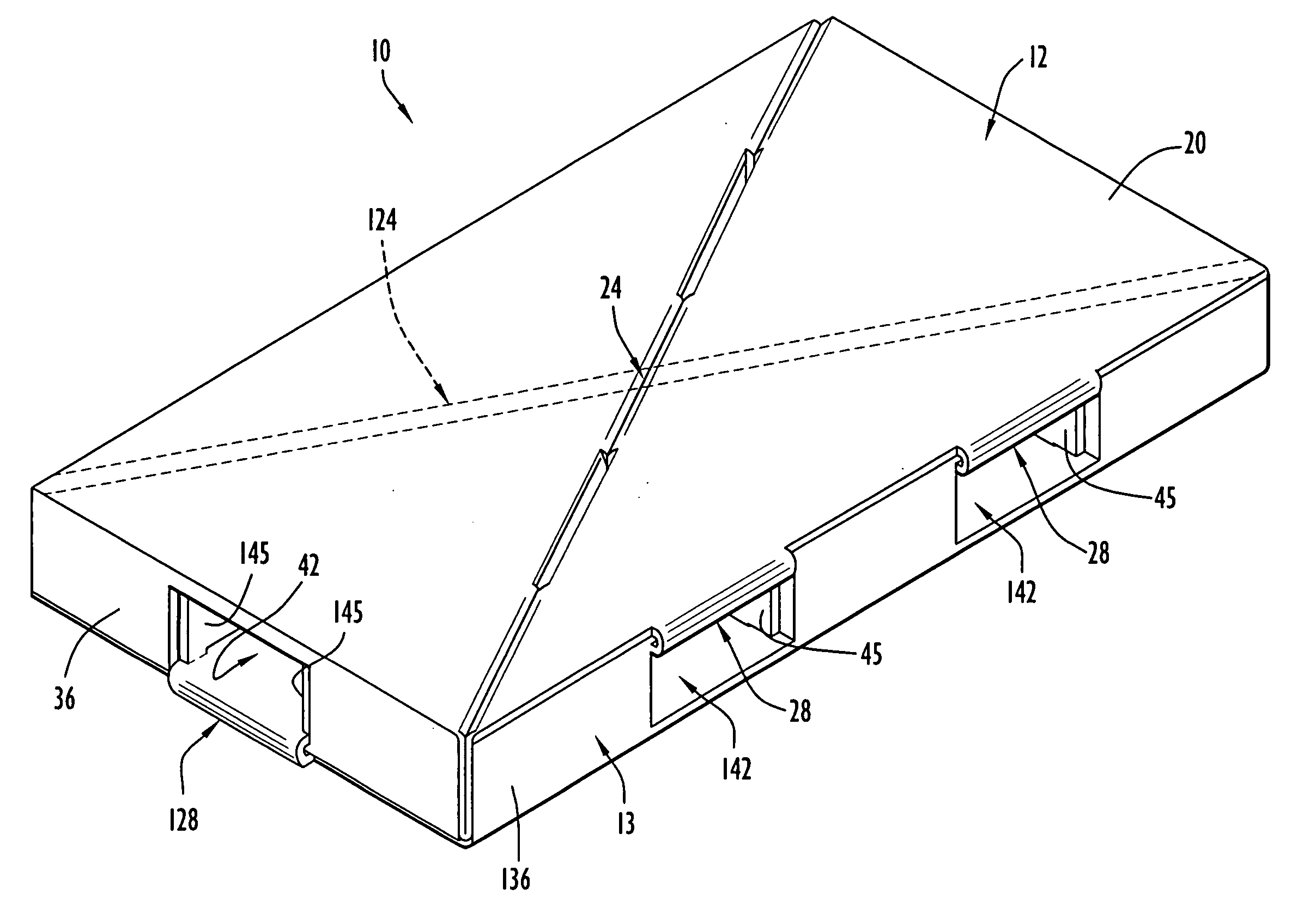Foldably constructed force-resisting structures having interior vertical support ribs
a vertical support and folding technology, applied in the direction of machine supports, furniture parts, containers, etc., can solve the problems of reducing the overall cost effectiveness of palletized shipments, and increasing the cost of making and repairing wooden pallets
- Summary
- Abstract
- Description
- Claims
- Application Information
AI Technical Summary
Benefits of technology
Problems solved by technology
Method used
Image
Examples
Embodiment Construction
[0039] A foldably constructed or assembled force-resisting structure or support 10 according to the present invention is illustrated in FIG. 1. The force-resisting structure 10 comprises a first or top member 12 and a second or bottom member 13 assembled to the top member 12. Prior to being foldably constructed or assembled, the top member 12 is in an unfolded condition comprising a first or top member blank 14 as depicted in FIG. 2. Prior to being foldably constructed or assembled, the bottom member 13 is in an unfolded condition comprising a second or bottom member blank 15 as depicted in FIG. 3. The blanks 14 and 15 are each flat or planar in the unfolded condition, each blank 14 and 15 being formed integrally and unitarily or monolithically as a single piece of sheet material. Preferably, the sheet material from which blanks 14 and 15 are made is paperboard and, most preferably, corrugated paperboard. However, thermal plastics or ductile metals could be used for the sheet materi...
PUM
 Login to View More
Login to View More Abstract
Description
Claims
Application Information
 Login to View More
Login to View More - Generate Ideas
- Intellectual Property
- Life Sciences
- Materials
- Tech Scout
- Unparalleled Data Quality
- Higher Quality Content
- 60% Fewer Hallucinations
Browse by: Latest US Patents, China's latest patents, Technical Efficacy Thesaurus, Application Domain, Technology Topic, Popular Technical Reports.
© 2025 PatSnap. All rights reserved.Legal|Privacy policy|Modern Slavery Act Transparency Statement|Sitemap|About US| Contact US: help@patsnap.com



